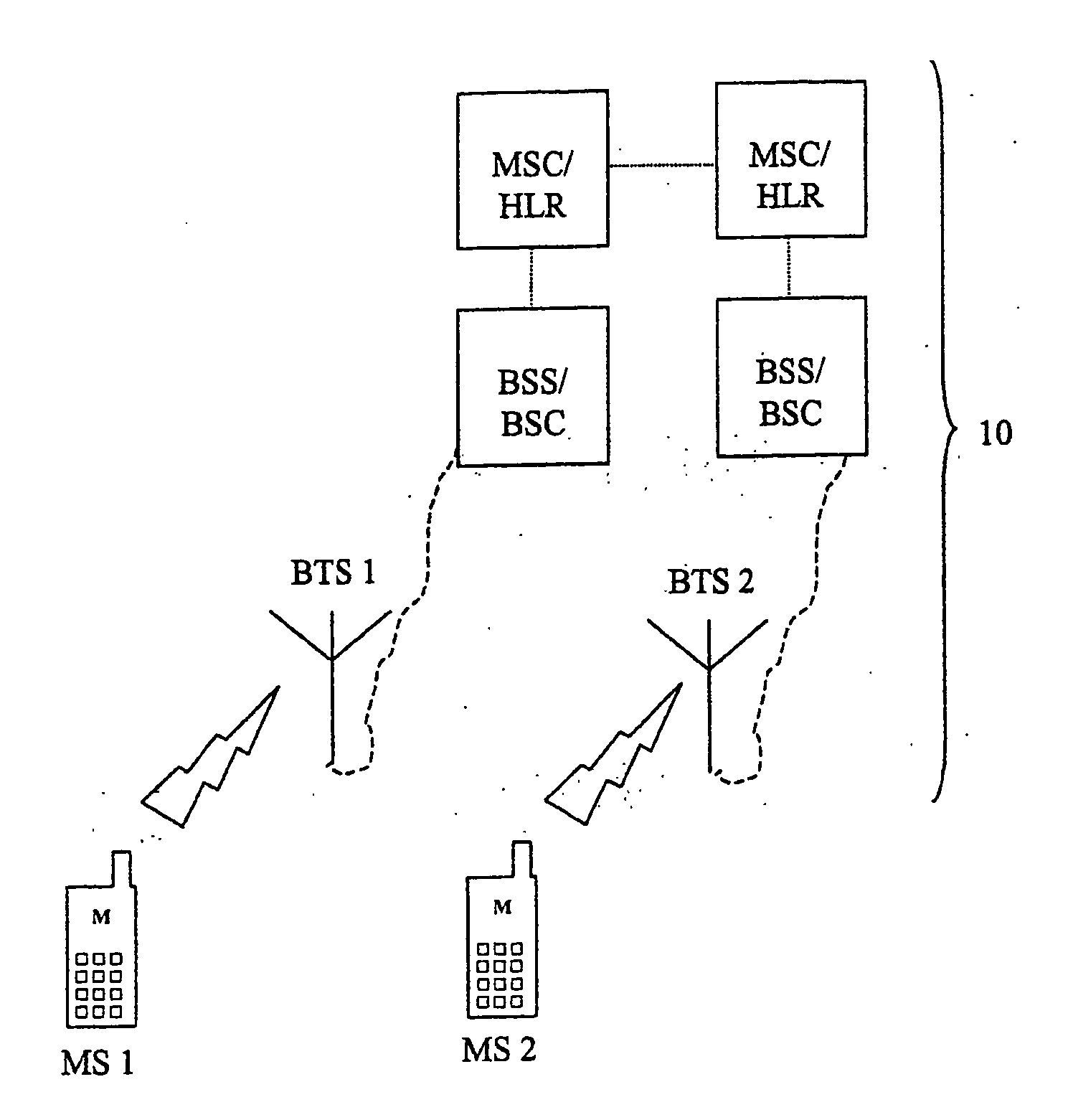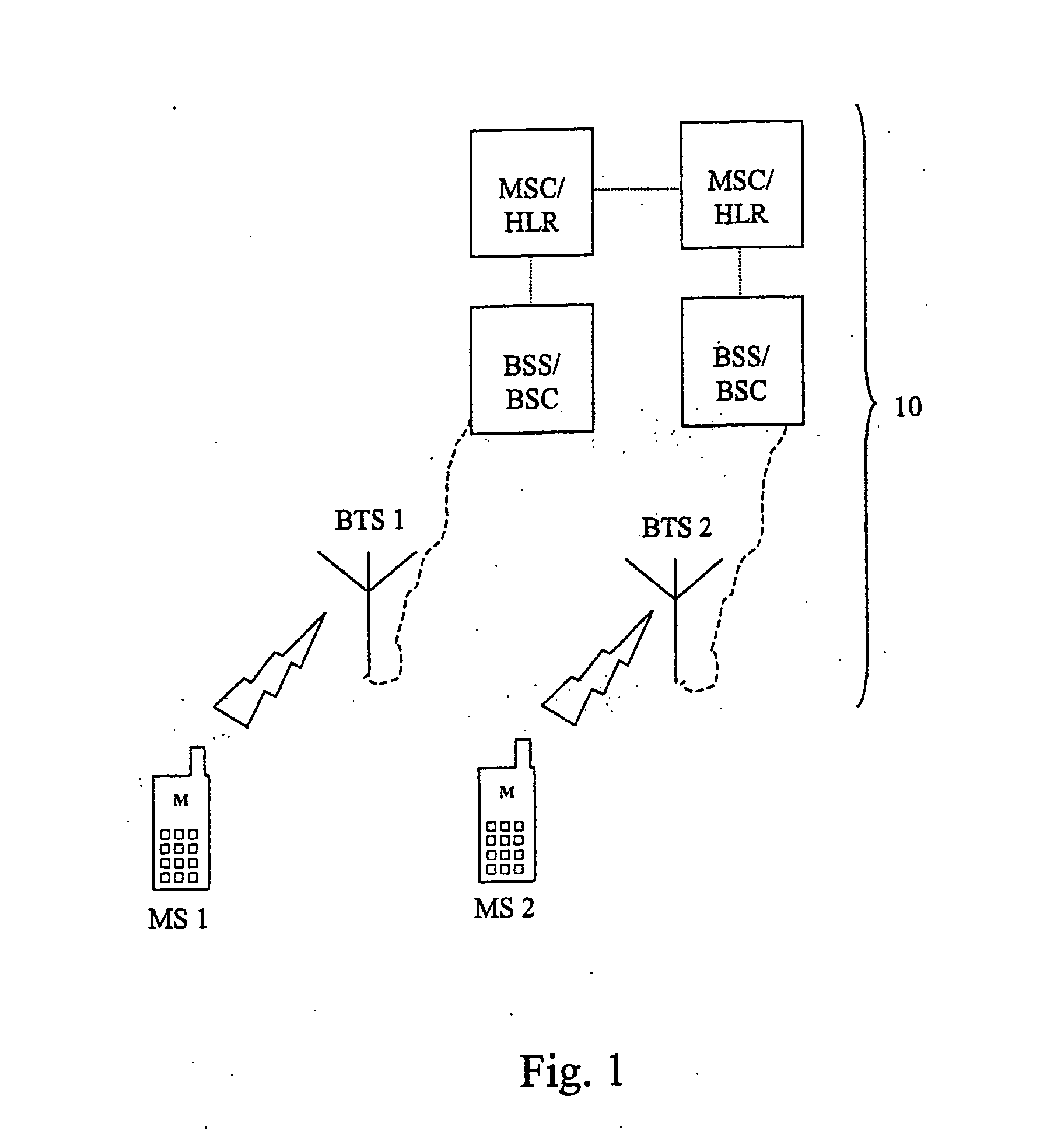Direct cellular communication
a direct cellular communication and mobile phone technology, applied in the field of cellular mobile stations, can solve the problems of increasing capacity, general lack of capacity, and unrealistic end-customer costs of high-bandwidth mobile telephone services, and achieve the effect of saving mobile phone costs and increasing capacity in the mobile telephone network
- Summary
- Abstract
- Description
- Claims
- Application Information
AI Technical Summary
Benefits of technology
Problems solved by technology
Method used
Image
Examples
Embodiment Construction
[0033] In FIG. 1, a schematic illustration of a typical prior art mobile network 10 is outlined. Mobile telephone networks 10 exist in several standards; Examples are GSM (Europe, Australia, and parts of Asia), D-AMPS (USA), etc. Third generation standards are also diverse and include e.g. W-CDMA. Regardless of standard, some basic elements and structures are the same for all mobile network standards: Each mobile telephone is in contact with a base station which, in turn, is connected to another base station controller, responsible of the supervision of a given set of base stations. Communication in the mobile network 10 is always accomplished in a hierarchical structure: Sending mobile station MS1→Base station BTS1→Base station controller BSS / BCS→(Transmission through mobile networks and potentially also transit networks) MCS / HLR→Base station controller BSS / BSC→Base station BTS2→Receiving mobile station MS2. The chosen communication pathway structure with many intermediates brings ...
PUM
 Login to View More
Login to View More Abstract
Description
Claims
Application Information
 Login to View More
Login to View More - R&D
- Intellectual Property
- Life Sciences
- Materials
- Tech Scout
- Unparalleled Data Quality
- Higher Quality Content
- 60% Fewer Hallucinations
Browse by: Latest US Patents, China's latest patents, Technical Efficacy Thesaurus, Application Domain, Technology Topic, Popular Technical Reports.
© 2025 PatSnap. All rights reserved.Legal|Privacy policy|Modern Slavery Act Transparency Statement|Sitemap|About US| Contact US: help@patsnap.com



